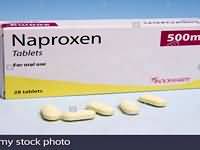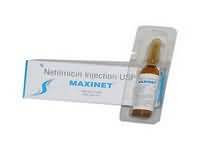Cimetidine

Cimetidine
CLINICAL USE
H2 antagonist:Conditions associated with hyperacidity Refractory uraemic pruritus (unlicensed use)DOSE IN NORMAL RENAL FUNCTION
Oral: duodenal and gastric ulceration treatment: 800 mg at night, or 400 mg twice daily; rarely, up to 1.6 g dailyProphylaxis: 400 mg at night or 400 mg twice dailyProphylaxis of stress ulceration: 200– 400 mg every 4–6 hoursReflux oesophagitis: 400 mg every 6 hours IM/IV: 200 mg every 4–6 hours, maximum 2.4 g dailyIV Infusion: 200–400 mg every 4–6 hours intermittent or 50–100 mg/hour continuous, maximum 2.4 g dailyZollinger-Ellison syndrome: 400 mg every 4–6 hoursPHARMACOKINETICS
DOSE IN RENAL IMPAIRMENT
GFR (mL/MIN)
DOSE IN PATIENTS UNDERGOING RENAL REPLACEMENT THERAPIES
IMPORTANT DRUG INTERACTIONS
Potentially hazardous interactions with other drugsAlpha-blockers: effects of tolazoline antagonisedAnti-arrhythmics: increased concentration of amiodarone, flecainide, lidocaine, procainamide and propafenoneAnticoagulants: enhanced effect of coumarinsAnti-epileptics: metabolism of carbamazepine, phenytoin and valproate inhibited. Antifungals: absorption of itraconazole and ketoconazole reduced; posaconazole concentration reduced; terbinafine concentration increasedAntimalarials: avoid concomitant use with artemether/lumefantrine; metabolism of chloroquine, hydroxychloroquine and quinine inhibitedAntipsychotics: possibly enhanced effect of antipsychotics, chlorpromazine and clozapine; increased risk of ventricular arrhythmias with sertindole – avoid concomitant useCiclosporin: possibly increased ciclosporin levelsCilostazol: possibly increased cilostazol concentration – avoid concomitant useCytotoxics: concentration of epirubicin and fluorouracil increased.156 CiMETidinEErgot alkaloids: increased risk of ergotism – avoid concomitant useTheophylline: metabolism of theophylline inhibitedADMINISTRATION
Reconstition
–Route
Oral, IM, IVRate of Administration
IV Infusion: 400 mg in 100 mL sodium chloride 0.9% or glucose 5% over 30–60 minutesIV bolus: 200 mg over at least 5 minutes. Dilute larger doses to 10 mL and give over at least 10 minutesContinuous IV Infusion: 50–100 mg/hourComments
Avoid bolus if possibleOTHER INFORMATION
Inhibits tubular secretion of creatinine Uraemic patients susceptible to mental confusion
See how to identify renal failure stages according to GFR calculation
See how to diagnose irreversible renal disease
Home








